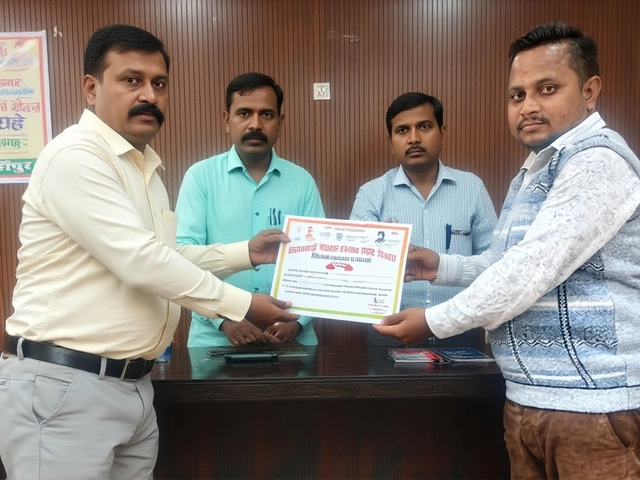February 2023 Career Advice Archive
Welcome to the February 2023 roundup from Career Path Hub. If you’re scrolling through this page, you probably want fast, useful advice that actually works. In the past month we covered everything from polishing a resume to handling a tricky interview, plus some solid steps for switching lanes or picking up new skills. Below you’ll find the highlights, organized so you can jump straight to the topic that matters most to you right now.
Resume and LinkedIn hacks you need
First up, the resume overhaul. We showed you how to swap generic bullet points for impact‑focused statements that quantify results – think “Boosted sales by 20% in three months” instead of “Responsible for sales growth.” The same post walked you through tailoring each application: match the language in the job description, and mirror the company's core values. On LinkedIn, the focus was on a headline that reads like a mini‑elevator pitch, not just a job title. Adding a short “About” section that tells a story of what you solve for employers makes recruiters pause and click.
Nailing interviews and negotiating offers
When it comes to interviews, the advice was simple: prep three stories that cover a challenge, your action, and the result. We suggested using the STAR method but kept it casual – imagine you’re chatting with a friend about a recent project, not reciting a script. We also covered the dreaded “salary expectations” question. The trick? Do a quick market check, give a range, and flip the conversation back to the value you’ll bring. One post even gave a cheat‑sheet of questions to ask the hiring manager, turning you into the more curious party in the room.
Switching careers felt like a big leap for many readers, so we broke it down into bite‑size steps. Start with a skills audit: list what you do now, then map those to the target role. Look for transferable skills – project management, communication, data analysis – that are always in demand. Next, we suggested low‑cost ways to close gaps: free MOOCs, short certifications, or volunteering. A real‑world example followed a marketer moving into product management, showing how a side project can become a portfolio piece that catches hiring eyes.
Finally, staying motivated was a theme we couldn’t ignore. The month’s posts reminded you that career growth isn’t a straight line. We shared a simple weekly review habit: write down three wins, one challenge, and a small action for the next week. This keeps progress visible and builds momentum. Another tip was to join a community – whether it’s a LinkedIn group, a local meetup, or an online forum – so you can share wins, ask questions, and stay accountable.
That’s the February 2023 snapshot in a nutshell. Each article was crafted to give you practical steps you can apply today, without jargon or fluff. Dive into the topics that matter most, and use these tips to move your career forward this month and beyond.

Artificial Intelligence (AI) is a branch of computer science which deals with the development of computer systems that can learn and think for themselves. Learning AI is best done through a combination of understanding the underlying concepts, learning core principles and algorithms, and then applying that knowledge to building projects and creating applications. This requires a combination of theoretical and practical learning, and the most successful learners often have a good blend of both. AI is an ever-evolving field, and its best to stay up to date with the latest developments and trends.

Baseball games have become longer in recent years, with the average game length increasing by almost 15 minutes since 2005. This is due to several factors, including longer commercial breaks, more pitching changes, and more replay reviews. Additionally, longer games can provide more opportunities for teams to come back from a deficit. While some argue that the length of games should be reduced, others believe that the game should be allowed to evolve naturally. Ultimately, it is up to the league and the players to decide how to keep the game of baseball enjoyable for everyone.

Translation software uses algorithms to recognize words and phrases and then translates them into another language. It deals with synonyms by recognizing them as different words with the same meaning, and translating them accordingly. It can also handle multiple meanings of a single word and translate it properly based on the context in which it is used. The software also has the ability to detect slang and idioms, and can accurately translate them into the target language. Additionally, the software can recognize subtle nuances and differences between similar words and phrases, and adapt its translation accordingly. Finally, it can also detect false friends, words that have the same spelling in two different languages but different meanings, and translate them accurately.




